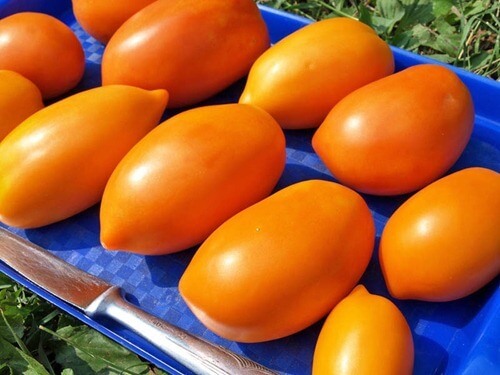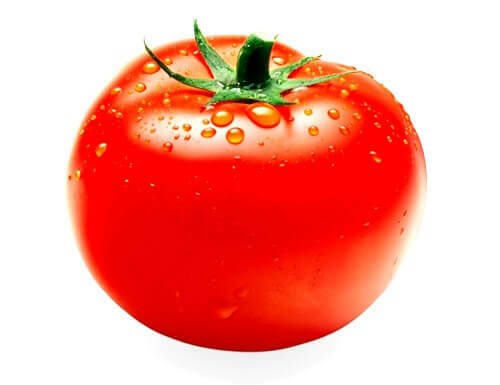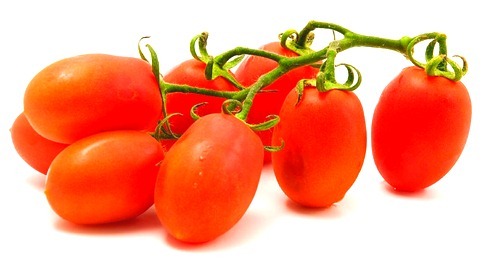Tomatoes are a generous source of vitamins A and C, as well as an antioxidant of lycopene, all of which help stimulate the body's immune system. Growing the best varieties of tomatoes in 2017 is beneficial due to high yields - an average of a bush can get up to ten kilograms and more.
And another good reason to grow tomatoes is their fragrance. Commercial crops are removed from the bushes unripe for transport purposes and the fragrance inevitably suffers. Tomatoes, which you grow yourself, can be collected completely ripe and will smell just divine.
Since there are more than 7500 varieties of tomatoes, choosing the right variety for your greenhouse can be a difficult task. Nevertheless, some varieties of tomatoes are bred specifically for growing under the conditions of a greenhouse and they yield fruit for a longer period than other varieties.
We studied the reviews of experts about new varieties of tomatoes, favorable for cultivation in 2017 and chose the best of them.
Contents:
- Best varieties of tomatoes for 2017 for greenhouses
- 5. "Sun Gold"
- 4. Super suites 100
- 3. "Beefsteak"
- 2. "Black Crimea"
- 1. Superstyle
- The best varieties of tomatoes for the opensoil of Russia
- 5. "Alicante"
- 4. "Eugene"
- 3. "Koenigsberg Gold"
- 2. "Cherie Lady"
- 1. "Roma VF"
Best grades of tomatoes for 2017 for greenhouses
5. "Sun Gold»
Bush: indeterminate
 Refers to cherry tomatoes. This variety has fruits of orange color with a sweet taste. It grows well in enclosed spaces. Fruits are ready to harvest after 57 days after transplanting.
Refers to cherry tomatoes. This variety has fruits of orange color with a sweet taste. It grows well in enclosed spaces. Fruits are ready to harvest after 57 days after transplanting.
4. Super suite 100
Hive: indeterminate
 Another greenhouse variety of cherry with a delicious sweet and sour tomato taste. Why is he among the best varieties of tomatoes in 2017?Experts' testimonies indicate that the Super Suite 100 is very fertile and grows to an incredible size in the greenhouses, creating a "tomato jungle".
Another greenhouse variety of cherry with a delicious sweet and sour tomato taste. Why is he among the best varieties of tomatoes in 2017?Experts' testimonies indicate that the Super Suite 100 is very fertile and grows to an incredible size in the greenhouses, creating a "tomato jungle".
3. "Beefsteak"
Bush: indeterminate
 Is one of the varieties of tomatoes that can be grown both under the film and outdoors. The tomatoes of this variety are large and can weigh up to 0.4 kg. Unfortunately, "Beefsteak" takes up to 90 days to ripen and grows at a temperature of 18 to 29 degrees.
Is one of the varieties of tomatoes that can be grown both under the film and outdoors. The tomatoes of this variety are large and can weigh up to 0.4 kg. Unfortunately, "Beefsteak" takes up to 90 days to ripen and grows at a temperature of 18 to 29 degrees.
2. "Black Crimea"
Hive: indeterminate
 The fruit of this variety of tomato is smaller than that of "Beefsteak" and have a deep burgundy color."Black Crimea" can be grown in any corner of Russia, it is unpretentious. From planting seeds to ripening of fruits passes 69-80 days.
The fruit of this variety of tomato is smaller than that of "Beefsteak" and have a deep burgundy color."Black Crimea" can be grown in any corner of Russia, it is unpretentious. From planting seeds to ripening of fruits passes 69-80 days.
1. Superstyle
Bush: indeterminate
 Gives large fruit that can weigh up to 0.8 kg. Smooth appearance and juicy pulp make this tomato an ideal candidate for salads and sandwiches.
Gives large fruit that can weigh up to 0.8 kg. Smooth appearance and juicy pulp make this tomato an ideal candidate for salads and sandwiches.
The best varieties of tomatoes for open ground of Russia
5. "Alicante"
Bush: indeterminate
 Medium-sized, round, red tomatoes with thin skin. Very tasty, resistant to fungal diseases and grow beautifully not only in Russia, but also in the humid climate of England. Perfectly suited and as a fresh snack and for canning.
Medium-sized, round, red tomatoes with thin skin. Very tasty, resistant to fungal diseases and grow beautifully not only in Russia, but also in the humid climate of England. Perfectly suited and as a fresh snack and for canning.
4. "Eugenia"
Bush: determinant
Z  is an acoustically resistant variety with short dark green leaves and dense, smooth fruits of red color. Withstands bad weather conditions, is resistant to cracking. Matures for 100-105 days.
is an acoustically resistant variety with short dark green leaves and dense, smooth fruits of red color. Withstands bad weather conditions, is resistant to cracking. Matures for 100-105 days.
3. " Koenigsberg Golden"
Hive: indeterminate
 The variety was bred by Siberian breeders and adapted to the harsh conditions of cultivation. Orange-yellow, medium-sized fruits are ideal for both greenhouses and open ground.
The variety was bred by Siberian breeders and adapted to the harsh conditions of cultivation. Orange-yellow, medium-sized fruits are ideal for both greenhouses and open ground.
2. "Sheri Lady"
Bush: determinant.
 Disease-resistant and easy-care Dutch tomato variety, which is excellent for open ground. Red, fleshy fruit with a shiny rind very beautifully look, grow up to 200 gr and have a rich taste.
Disease-resistant and easy-care Dutch tomato variety, which is excellent for open ground. Red, fleshy fruit with a shiny rind very beautifully look, grow up to 200 gr and have a rich taste.
1. "Roma VF"
Bush: determinant.
 Tomato in the form of plum, with fleshy pulp and almost pitted. Suitable for making sauces, ketchup, tomato juice and soups. This variety is resistant to diseases and very fertile( 13-15 kg per square meter).Matures from 100 to 120 days.
Tomato in the form of plum, with fleshy pulp and almost pitted. Suitable for making sauces, ketchup, tomato juice and soups. This variety is resistant to diseases and very fertile( 13-15 kg per square meter).Matures from 100 to 120 days.
Advice: when caring for tomatoes, do not cut leaves or side shoots in the bushes, because the cut edges "bleed" and weaken the plant and, possibly, will allow the botrytis to develop. Hand-torn edges dry faster and safer for the plant.



